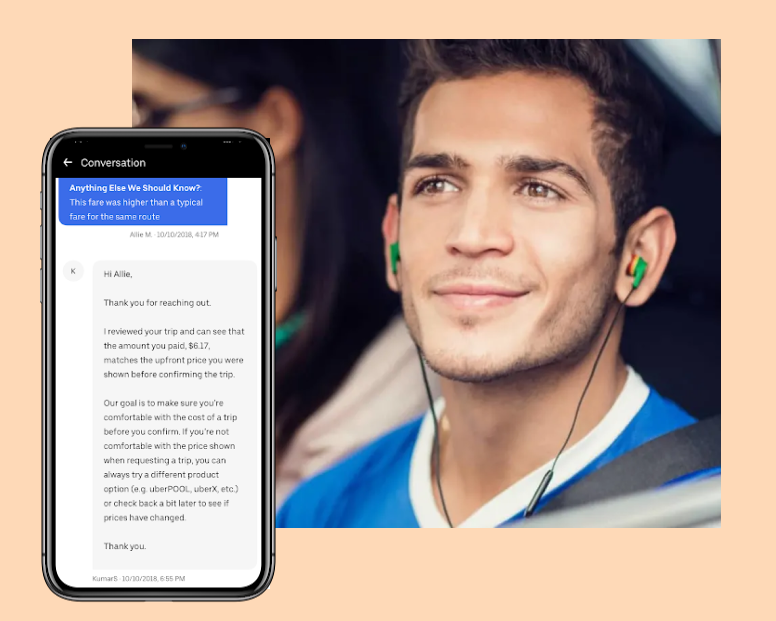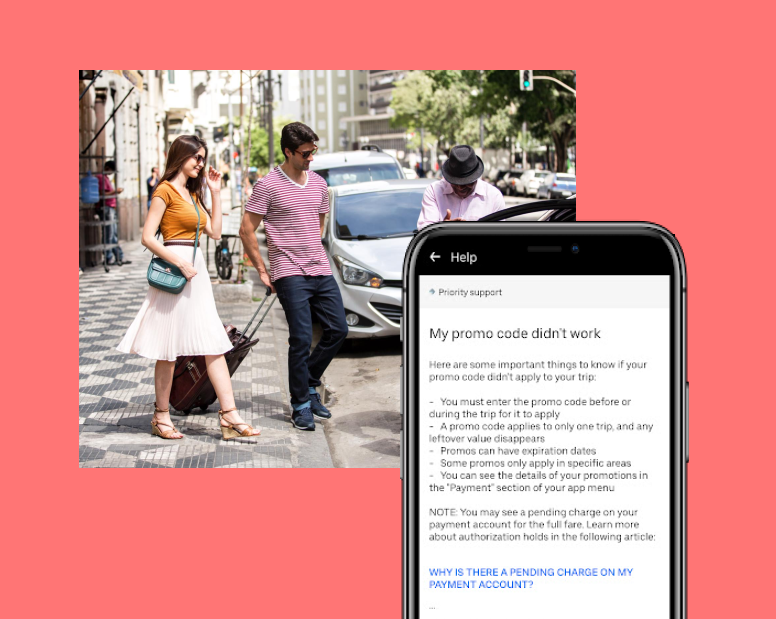Optimizing for Global
Auditing, simplifying and localizing content
Context: Uber’s user base is incredibly diverse and geographically dispersed, with operations in more than 10,000 cities. The app is available in 38 languages, and localizing content is key to serving our multi-cultural user base. As anyone who has written for localization before knows, clear, straightfoward, jargon-free content is the best place to start to ensure that it maintains its essential message after translation. Because the help center articles and agent saved reply library had grown organically without guidance for years, there was a wide range of styles and word choice, which led to confusing translations.
Problem: Users from all 38 of our languages report mistranslated or confusing text in our help center and agent responses.
Solution: Rewrite top-used content for clarity and follow localization best practices.
My thinking: By removing jargon and colloquial terms, streamlining phrases to their most direct form, and limiting sentences to 12 words apiece, we optimize the text for localization (in short, translation into other languages). This creates a consistent customer experience with Uber and one that is most useful to our global user base. By using to data to identify the most important content, I maximized effort within time and budget constraints.


My Role
Develop global style guide
Use data to identify most-viewed articles and most-used saved replies
Rewrite top help center articles and saved replies to adhere
Socialize, implement and oversee use of the guide among broad network of content creators